Subscriber Exclusive
Minor Key Mitts: Blending for the Northman Mittens
Kim McKenna continues the conversation on using value keys to create the perfect blend.
Kim McKenna continues the conversation on using value keys to create the perfect blend. <a href="https://spinoffmagazine.com/minor-key-mitts-blending-for-the-northman-mittens/">Continue reading.</a>
https://spinoffmagazine.com/cdn-cgi/image/format=auto/https://www.datocms-assets.com/75073/1731703014-mckenna-photos-2a-and-2b.jpg?auto=format&w=900
Editor’s Note: In her Winter 2025 Spin Off article, “An Artist’s Approach to Carding Color,” Kim McKenna describes using value keys to organize color on a blending board or set of handcards. While we crave color, value often plays an underappreciated role in the success of a project. Value refers to the relative lightness and darkness of colors. It can be divided into keys that let you see the progression of color as a scale that runs from light to dark.
There are so many ways to use Kim McKenna’s technique of using value keys to select colors for spinning and knitting! In the En Plein Air Half-Mitts pictured on this issue’s cover, McKenna used value keys to design a tweed-like four-ply yarn, but that’s only the tip of the iceberg. Here’s how she used value keys to blend the same colorways for a classic stranded colorwork project.
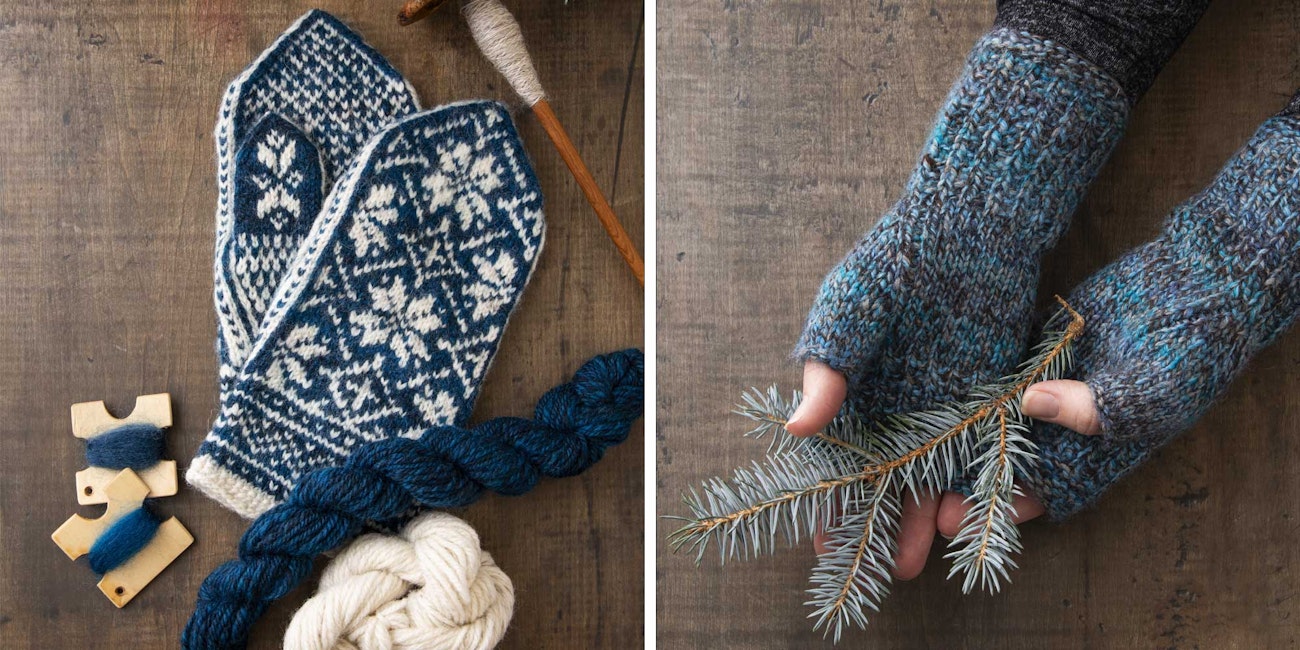 If you didn’t know it, you might not guess that both the Northman Mittens (left) and En Plein Air Half-Mitts (right) were spun from the same colorways. Photos by Matt Graves
If you didn’t know it, you might not guess that both the Northman Mittens (left) and En Plein Air Half-Mitts (right) were spun from the same colorways. Photos by Matt Graves
Much like a color wheel helps us define relationships between colors, a value key helps us define relationships between values. A value key is a range of values that may be used together in a piece of art. Value keys are what evoke feelings and have an emotional impact in our work. I most often use value keys when designing warps and rolags. Major value keys contain a broad range of values from one end of the value scale to the other, while minor value keys possess more closely related values and make use of a narrower range of the value scale. Because a major key contains a full range of values, it will have large areas of contrast among light, medium, and dark values. The narrow range of values in a minor key results in less contrast.
The main color in the Northman Mittens by David Schulz is a dark, rich Prussian blue that serves nicely as backdrop for the contrast color, a lightly striated warm white. Both yarns were spun from minor value key rolags, but with a twist. For these minor value keys I did not load the board in a predictable striping pattern, as I did for the En Plein Air Mitts by Diana Twiss. Instead, to add a bit more interest to the yarn, these minor value keys were created by placing the fiber on the blending board in thin layers and by leaving a few gaps in coverage here and there. This allowed each layer to peek through in places to the layer above and below. This still creates a minor value key, but the effect is slightly more random.
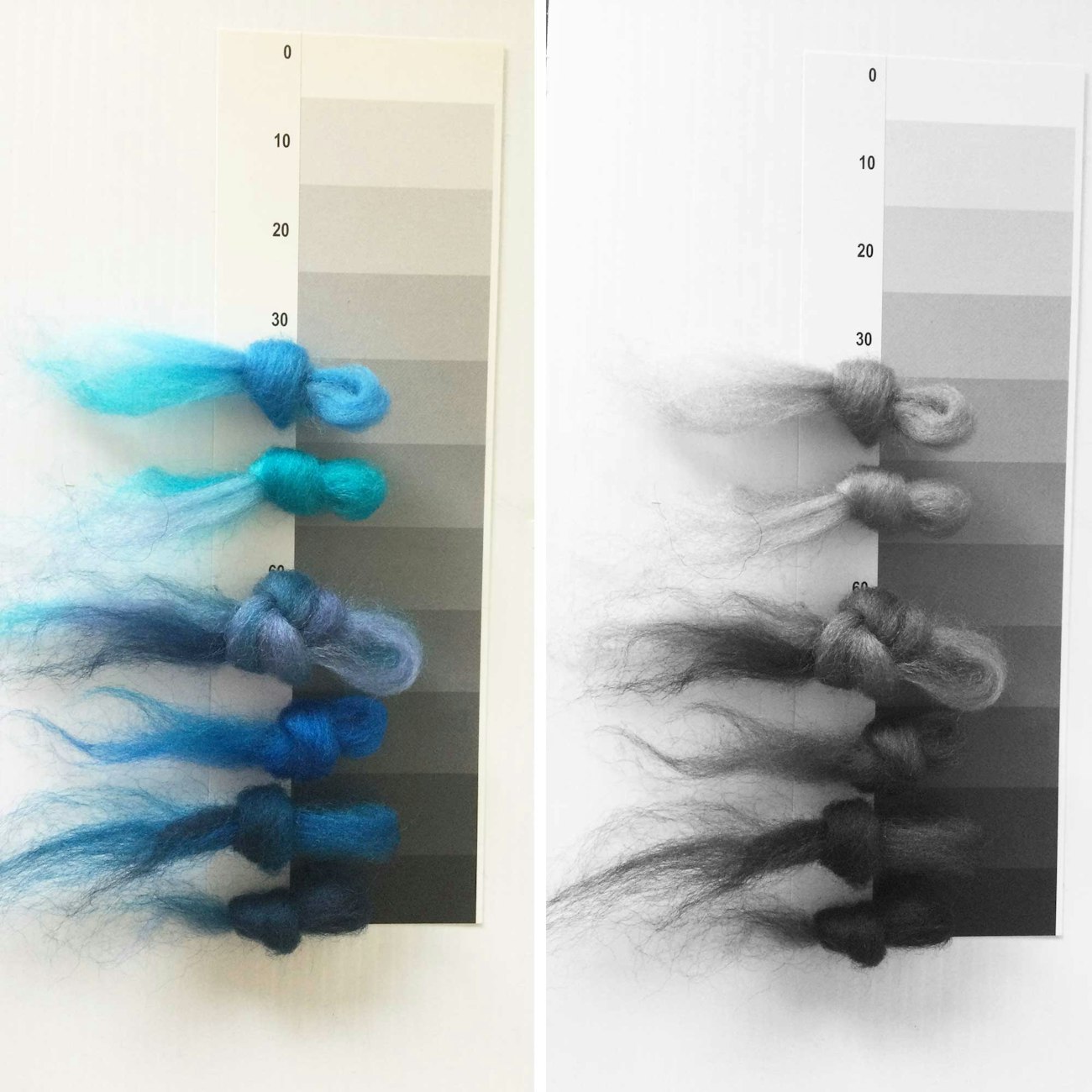 For the Northman Mittens, McKenna used the three darkest values of her braid, shown at the bottom of this scale.
For the Northman Mittens, McKenna used the three darkest values of her braid, shown at the bottom of this scale.
Blending the Main Color:
SUBSCRIBER EXCLUSIVE
Editor’s Note: In her Winter 2025 Spin Off article, “An Artist’s Approach to Carding Color,” Kim McKenna describes using value keys to organize color on a blending board or set of handcards. While we crave color, value often plays an underappreciated role in the success of a project. Value refers to the relative lightness and darkness of colors. It can be divided into keys that let you see the progression of color as a scale that runs from light to dark.
There are so many ways to use Kim McKenna’s technique of using value keys to select colors for spinning and knitting! In the En Plein Air Half-Mitts pictured on this issue’s cover, McKenna used value keys to design a tweed-like four-ply yarn, but that’s only the tip of the iceberg. Here’s how she used value keys to blend the same colorways for a classic stranded colorwork project.
 If you didn’t know it, you might not guess that both the Northman Mittens (left) and En Plein Air Half-Mitts (right) were spun from the same colorways. Photos by Matt Graves
If you didn’t know it, you might not guess that both the Northman Mittens (left) and En Plein Air Half-Mitts (right) were spun from the same colorways. Photos by Matt Graves
Much like a color wheel helps us define relationships between colors, a value key helps us define relationships between values. A value key is a range of values that may be used together in a piece of art. Value keys are what evoke feelings and have an emotional impact in our work. I most often use value keys when designing warps and rolags. Major value keys contain a broad range of values from one end of the value scale to the other, while minor value keys possess more closely related values and make use of a narrower range of the value scale. Because a major key contains a full range of values, it will have large areas of contrast among light, medium, and dark values. The narrow range of values in a minor key results in less contrast.
The main color in the Northman Mittens by David Schulz is a dark, rich Prussian blue that serves nicely as backdrop for the contrast color, a lightly striated warm white. Both yarns were spun from minor value key rolags, but with a twist. For these minor value keys I did not load the board in a predictable striping pattern, as I did for the En Plein Air Mitts by Diana Twiss. Instead, to add a bit more interest to the yarn, these minor value keys were created by placing the fiber on the blending board in thin layers and by leaving a few gaps in coverage here and there. This allowed each layer to peek through in places to the layer above and below. This still creates a minor value key, but the effect is slightly more random.
 For the Northman Mittens, McKenna used the three darkest values of her braid, shown at the bottom of this scale.
For the Northman Mittens, McKenna used the three darkest values of her braid, shown at the bottom of this scale.
Blending the Main Color:[PAYWALL]
- Layer 1: Load half the board with color 1 and the other half with color 2.
- Layer 2: Load the full board with color 3.
- Layer 3: Load half the board with color 1 and the other half with color 2.
- Layer 4: Load the full board with color 3.
Doff rolags from this four-layered batt with the help of two dowels. I made a total of four rolags from my blend.
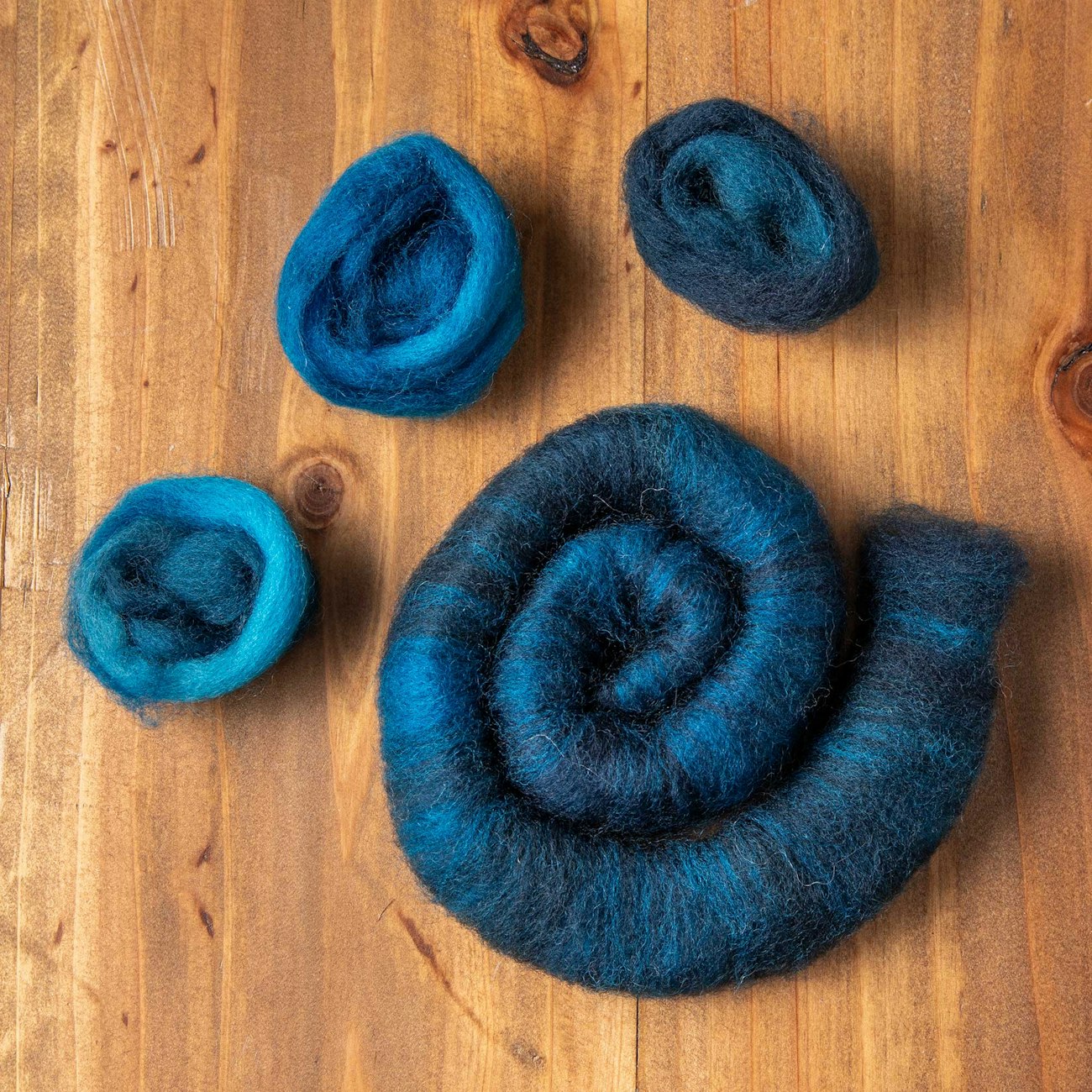 Loading four layers of color creates a subtle look. Rolling into rolags blends the colors further. Photo by Matt Graves
Loading four layers of color creates a subtle look. Rolling into rolags blends the colors further. Photo by Matt Graves
Blending the Contrast Color:
Blending the high-value white with the low-value brown required two steps. This is very common when you want to achieve a subtle blend with high-contrast colors.
Step 1
- Layer 1: Load the full board with natural white Shetland.
- Layer 2: Load the full board with natural white Shetland and a speck of a brown color from a “Heartfelt” braid.
- Repeat Layers 1 & 2 once more.
Doff this four-layered batt from the blending board in one piece (no need to make rolags at this point).
Step 2:
- Layer 1: Load the full board with natural white Shetland.
- Layer 2: Load the full board with strips torn from the batt made in Step 1.
- Layer 3: Load the full board with natural white Shetland.
Doff rolags from this three-layered batt with the help of two dowels. I made a total of four rolags from my blend.
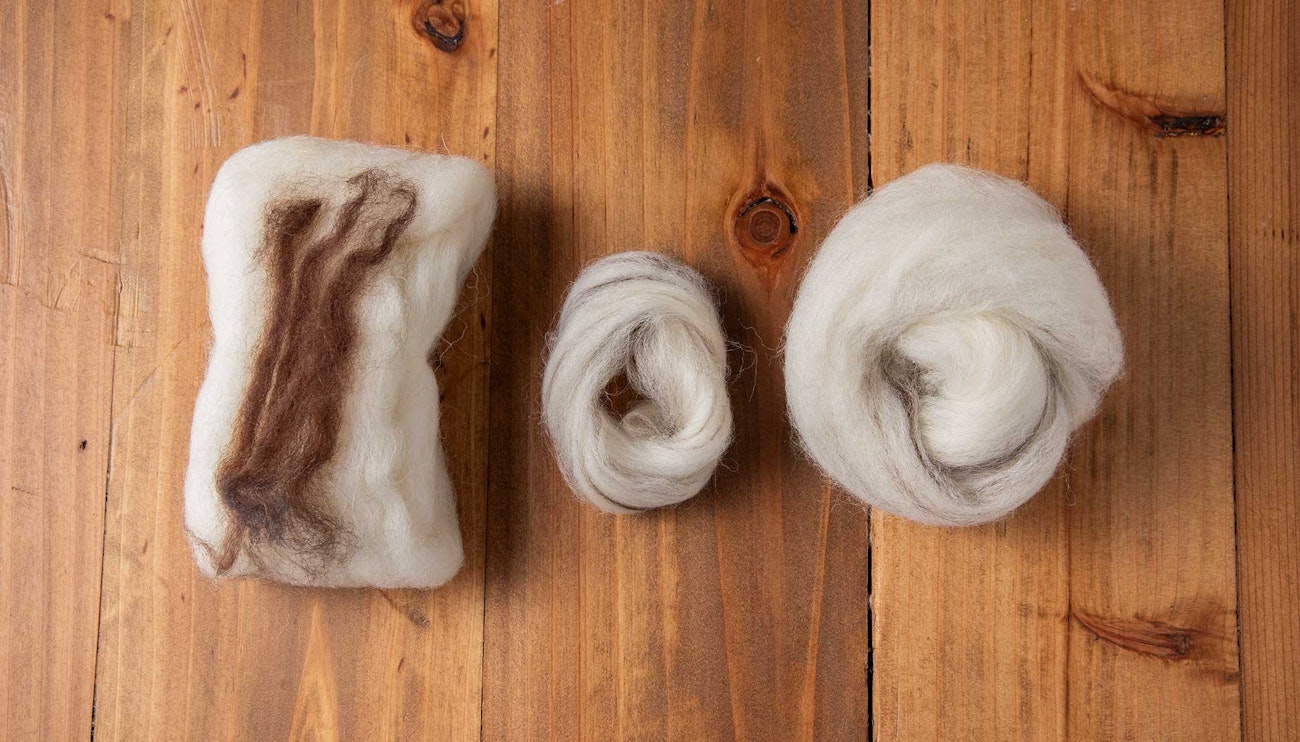 High-contrast unblended fiber, progressing to a subtle blend. Photo by Matt Graves
High-contrast unblended fiber, progressing to a subtle blend. Photo by Matt Graves
Knitting notes:
These mittens are the design of David Schulz of Southern Cross Fibre. After knitting my gauge swatch, I determined I needed to add 7 rows to achieve the correct length for my hand. I added these at the beginning of the pattern and in the thumb gusset. My finished mitts look a little different than the photo on David Schulz’s pattern page on Ravelry, but they’re a perfect fit!
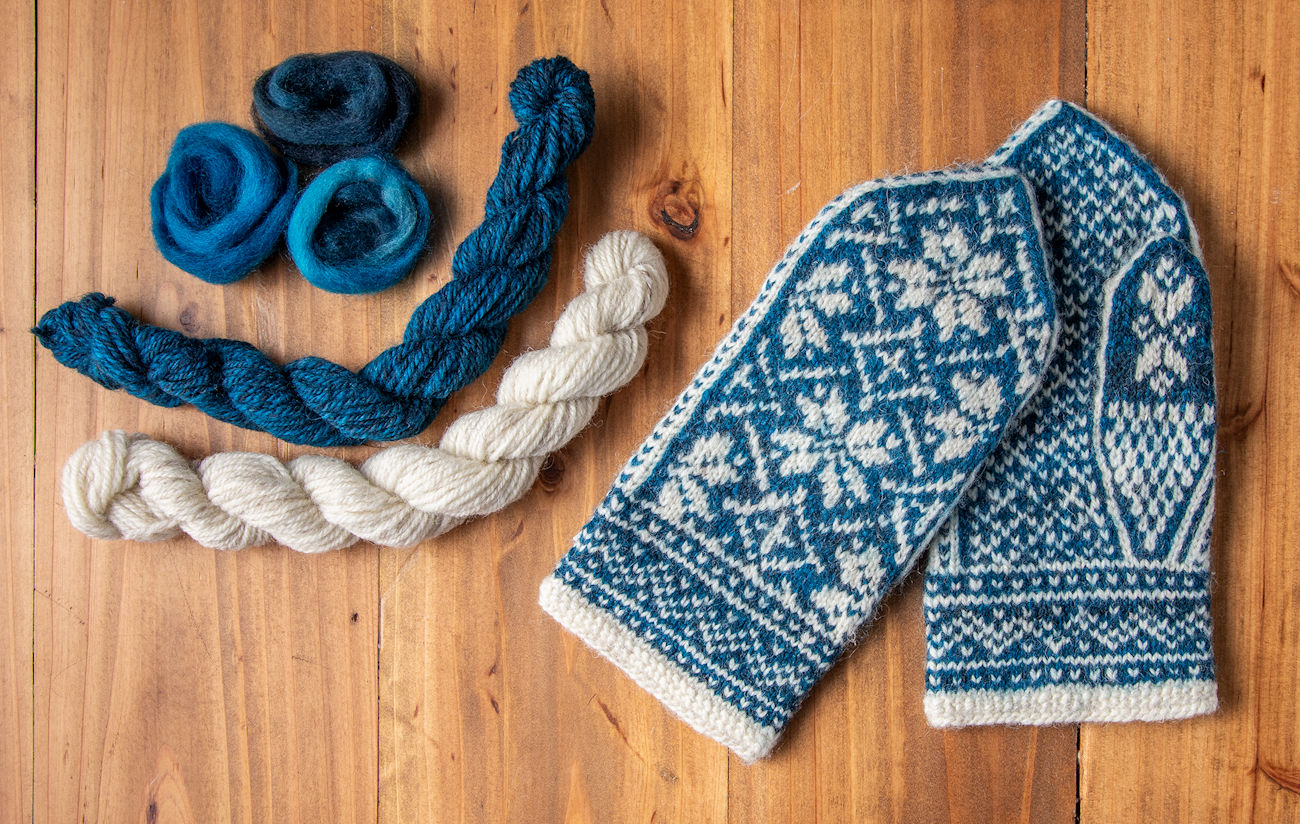 McKenna's completed Northman Mittens, shown next to the yarns and the three values of blue she used to blend the main color. Photo by Matt Graves
McKenna's completed Northman Mittens, shown next to the yarns and the three values of blue she used to blend the main color. Photo by Matt Graves
Resources
- Crafty Jak’s, Crystal Lake and Heartfelt colorways, craftyjaks.ca.
- Northman Mittens by David Schulz, available at ravelry.com.
Learn more about how Kim blended the fibers for her handspun En Plein Air Half-Mitts shown above in her Spin Off Winter 2025 article, “An Artist’s Approach to Carding Color: Build Palettes with Value Keys.”
Curiosity is what propels Kim McKenna’s fiber journey. She constantly strives to improve her fiber-preparation and spinning skills. Kim teaches workshops through SweetGeorgia Yarns, both in person and through the online School of SweetGeorgia. She also teaches silk-spinning workshops through Sanjo Silk. You can follow her at claddaghfibrearts.com and on Instagram @claddaghfibrearts.
 If you didn’t know it, you might not guess that both the Northman Mittens (left) and En Plein Air Half-Mitts (right) were spun from the same colorways. Photos by Matt Graves
If you didn’t know it, you might not guess that both the Northman Mittens (left) and En Plein Air Half-Mitts (right) were spun from the same colorways. Photos by Matt Graves  For the Northman Mittens, McKenna used the three darkest values of her braid, shown at the bottom of this scale.
For the Northman Mittens, McKenna used the three darkest values of her braid, shown at the bottom of this scale. 
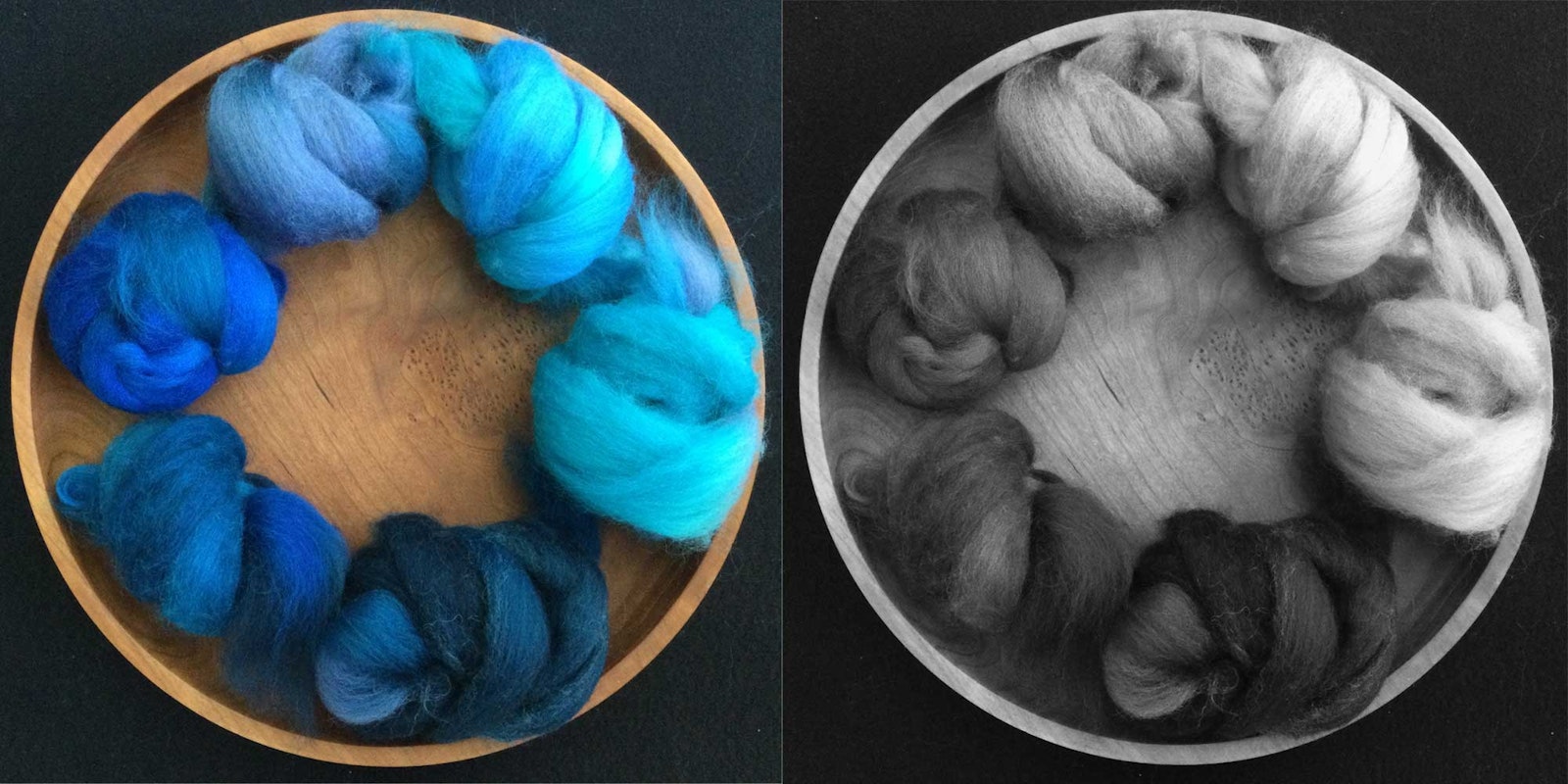
 Loading four layers of color creates a subtle look. Rolling into rolags blends the colors further. Photo by Matt Graves
Loading four layers of color creates a subtle look. Rolling into rolags blends the colors further. Photo by Matt Graves  High-contrast unblended fiber, progressing to a subtle blend. Photo by Matt Graves
High-contrast unblended fiber, progressing to a subtle blend. Photo by Matt Graves  McKenna's completed Northman Mittens, shown next to the yarns and the three values of blue she used to blend the main color. Photo by Matt Graves
McKenna's completed Northman Mittens, shown next to the yarns and the three values of blue she used to blend the main color. Photo by Matt Graves